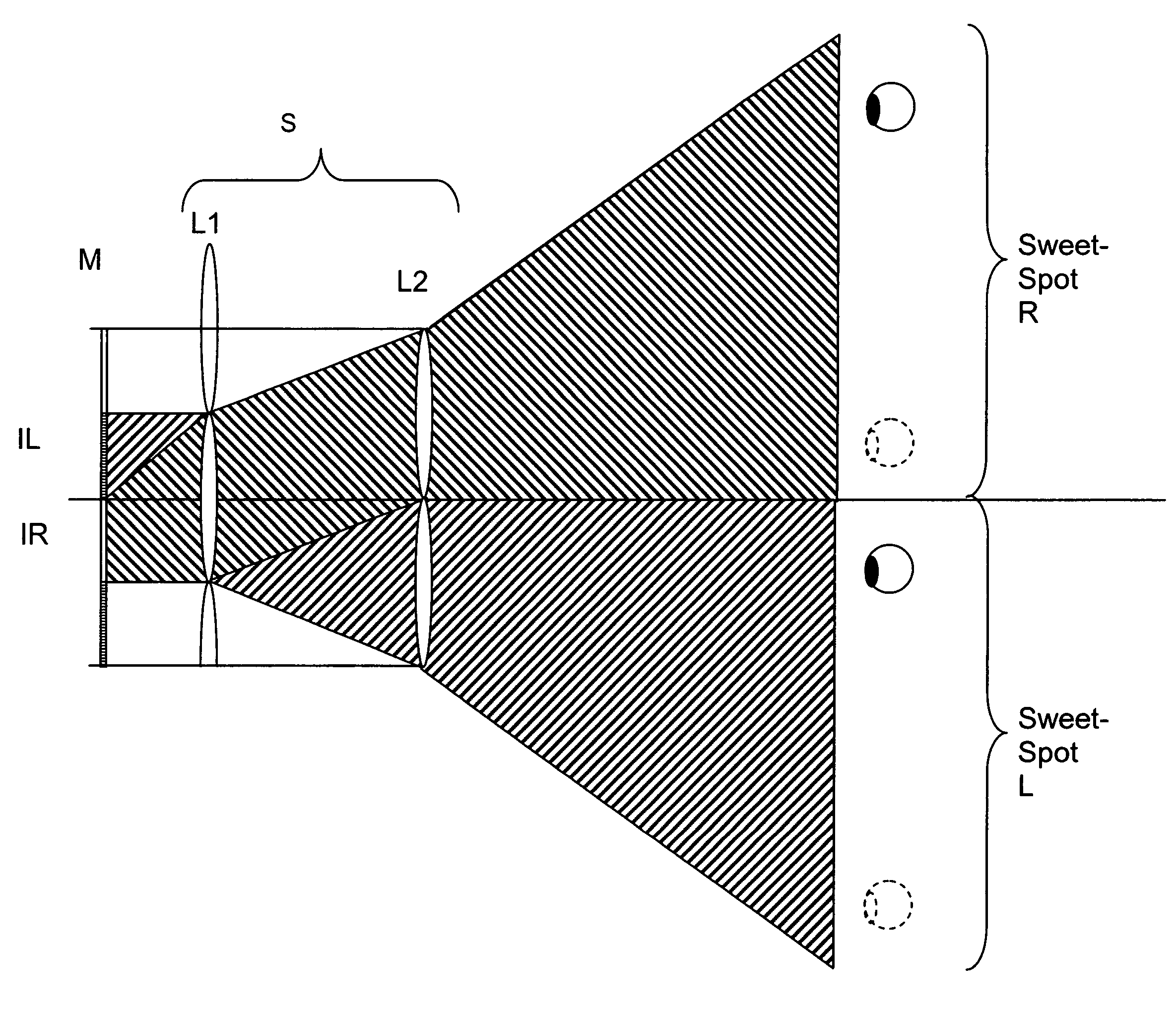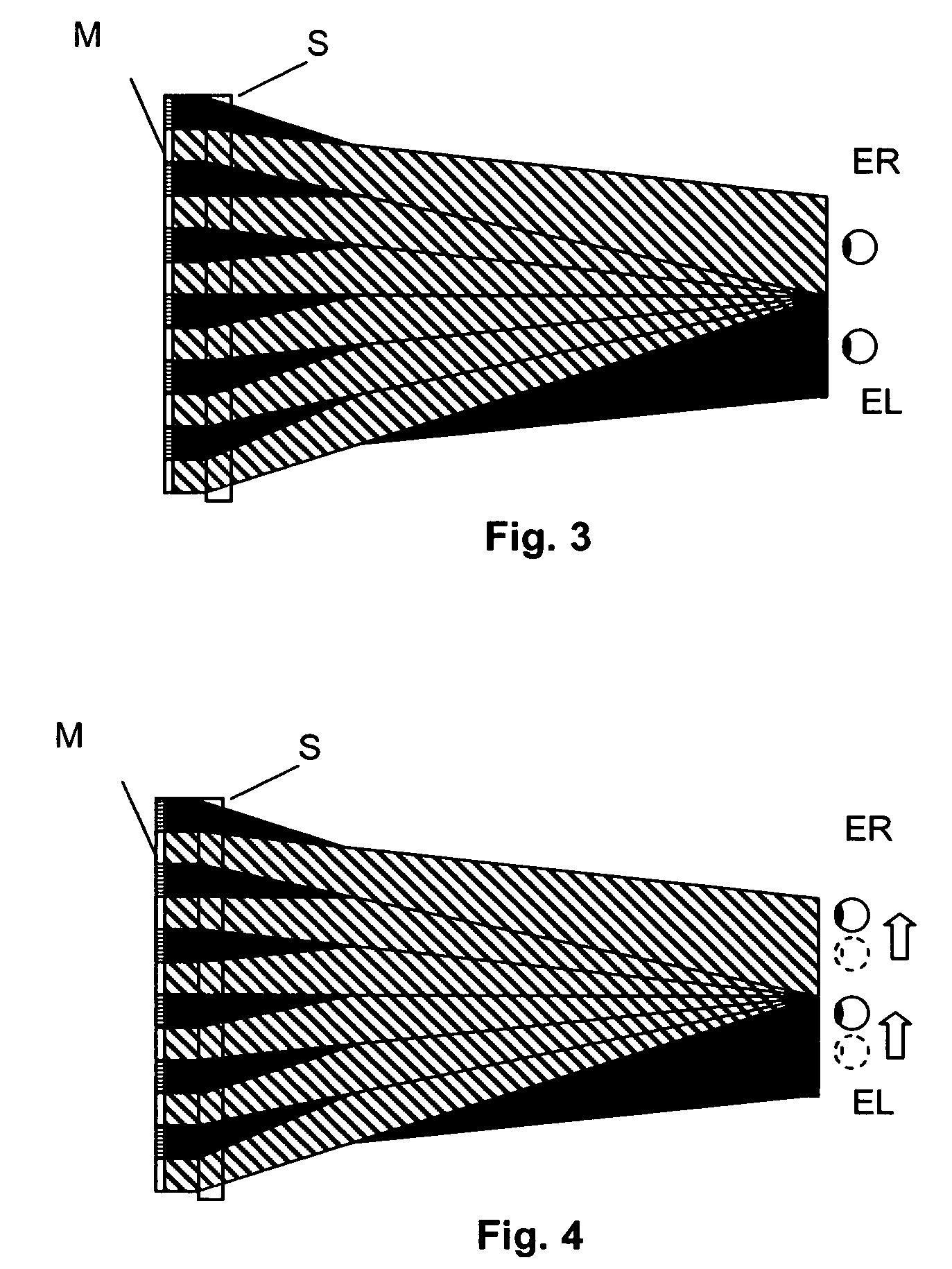Sweet Spot Beam Splitter for Separating Images
a beam splitter and beam beam technology, applied in the field of image separation, to achieve the effect of improving the ability of untracked displays and enlargement of sweet spots
- Summary
- Abstract
- Description
- Claims
- Application Information
AI Technical Summary
Benefits of technology
Problems solved by technology
Method used
Image
Examples
Embodiment Construction
[0039]FIGS. 1 and 2 illustrate schematically the prior art image projection in an untracked autostereoscopic display with image matrix and conventional beam splitter. FIG. 1 is a schematic diagram which illustrates the prior art image projection in an untracked autostereoscopic display with image matrix and conventional beam splitter.
[0040]Seen in the direction of light propagation, FIG. 1 shows one after another an image matrix M, a conventional beam splitter S and the left eye EL and the right eye ER of a viewer. The image matrix M contains a right and a left stereo image IR and IL, which are interleaved alternately in columns. The sweet spot which carries the image information only has the extension of a point or vertical line. If the viewer's eyes are precisely in these sweet spots, he will perceive a stereo image without cross-talking. The right eye can only see the right stereo image, and the left eye can only see the left stereo image.
[0041]FIG. 2 is a schematic diagram which...
PUM
 Login to View More
Login to View More Abstract
Description
Claims
Application Information
 Login to View More
Login to View More - R&D
- Intellectual Property
- Life Sciences
- Materials
- Tech Scout
- Unparalleled Data Quality
- Higher Quality Content
- 60% Fewer Hallucinations
Browse by: Latest US Patents, China's latest patents, Technical Efficacy Thesaurus, Application Domain, Technology Topic, Popular Technical Reports.
© 2025 PatSnap. All rights reserved.Legal|Privacy policy|Modern Slavery Act Transparency Statement|Sitemap|About US| Contact US: help@patsnap.com



